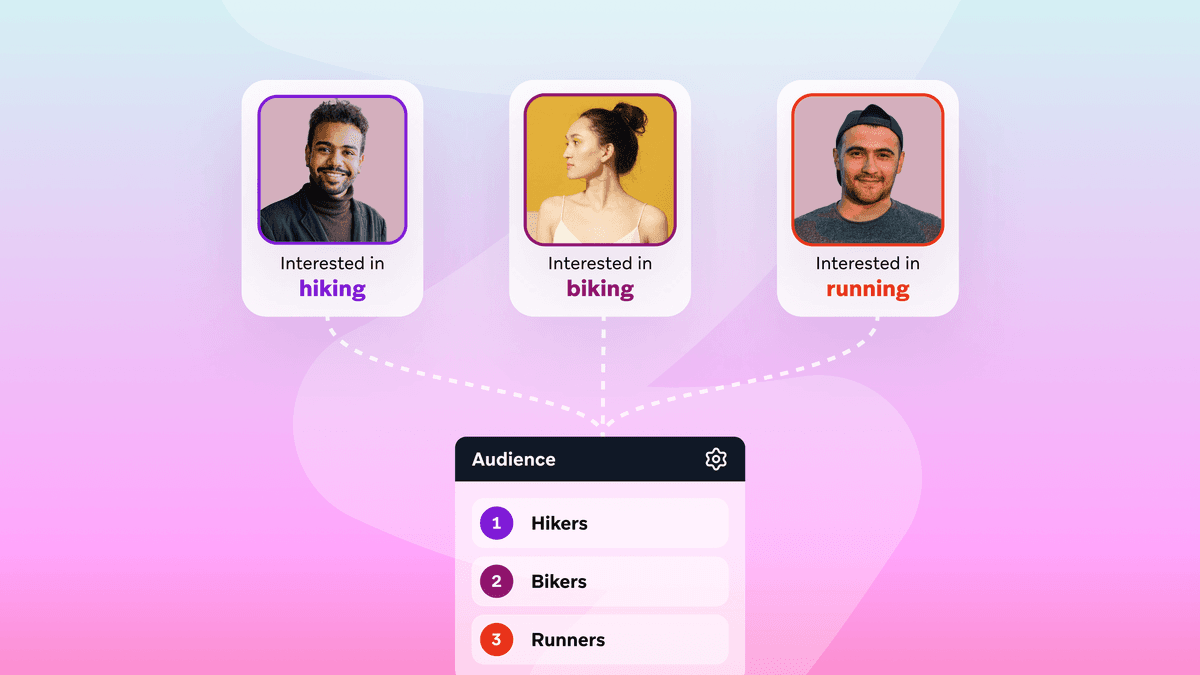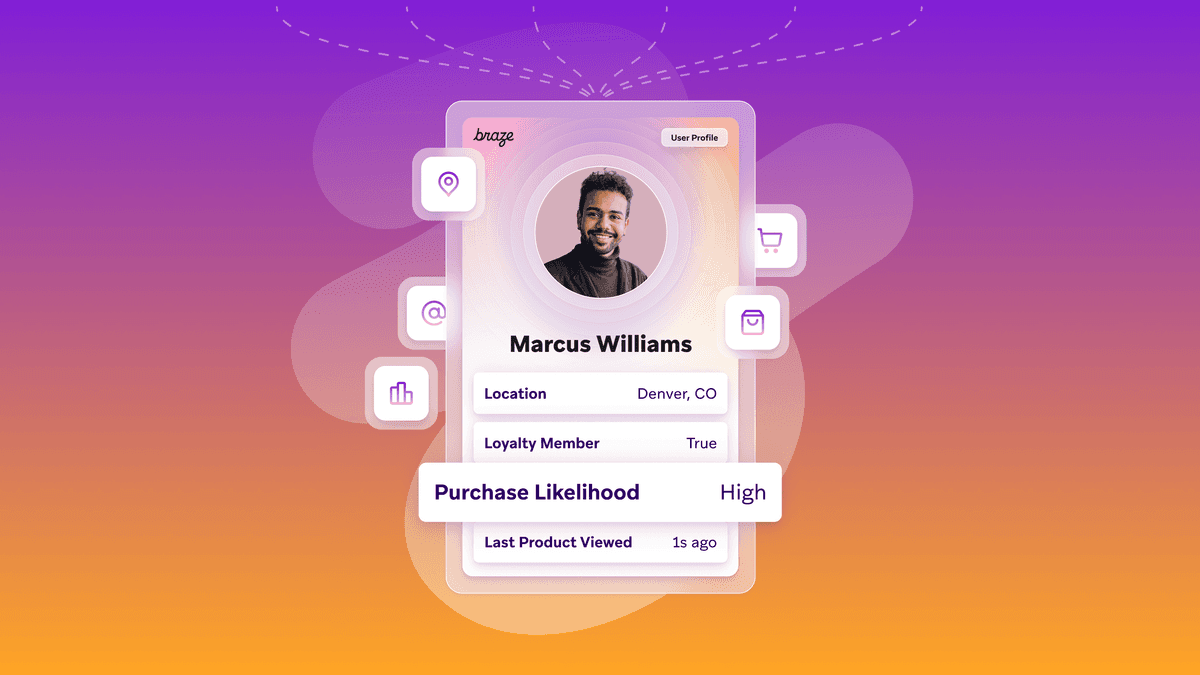How Braze Supports the Flexible Identification of Both Known and Anonymous Users
Published on January 08, 2024/Last edited on January 08, 2024/9 min read


John Dinh
Product Manager, BrazeTo succeed in today’s challenging customer engagement landscape, brands need to understand who their users are, how they’re engaging, and what they care about. But many marketers still find themselves struggling to identify their users in consistent, accurate ways—to say nothing of taking these anonymous users and finding consistent ways to convert them into loyal, engaged users. That can result in larger audiences and a stronger bottom line, but you need the right strategy and technology to make it happen.
To help out, Braze has developed capabilities and features to make it easier for brands to simplify the process of identifying both known and anonymous users. So, let’s explore the ins-and-outs of user identification, the potential of known and anonymous users, and how Braze can help brands gain a holistic understanding of every user while nudging anonymous users to become known ones.
Why User Identification Matters
Marketers are more successful when they understand their brands’ users. To make that possible, brands today gather a wide range of information about individuals (e.g. how often they visit certain pages, how often they open the brand’s mobile app, when their last purchase was). Messaging that builds on a consolidated profile featuring accurate, multiple, and complementary elements delivers the best results—and the best customer experience.
But while the amount of data about consumers has grown enormously in recent decades with the rise of the internet and mobile devices, brands need to be able to identify their users to get a real understanding of their behavior and ensure the relevance of their marketing efforts. After all, many users engage across platforms and channels, and without accurate identification, you run the risk of treating an individual’s web and mobile sessions, for instance, as two different users—missing the forest for the trees.
One place where some brands could use a little help is the integration of user activity across different devices and platforms. Suppose you aren’t gathering and processing data from all your digital properties in a holistic, ongoing way. In that case, it’s easy to get a view of users that’s siloed based on platform, misrepresenting their behavior and making it difficult to provide them with a cohesive experience of your brand. There are many such examples—some systemic, some random—and they all undermine the value of a consolidated profile that powers effective marketing and engagement.
The Differences Between Anonymous and Known Users—and Why They Matter
In order to understand your users, arguably the most essential distinction is whether a given user is anonymous or known. But what does it mean for someone to be an anonymous user—and what implications does anonymity have on customer engagement?
In the strictest sense, an anonymous user is anyone who engages in some way with a brand’s app, website, or other digital touchpoint without being identified. We’ve probably all done it at one time or another—whether because we haven’t yet created a user profile, or just haven’t bothered to log in on a particular device. Even so, anonymous users’ interactions and behaviors are usually still recorded in some form. Still, because the individual isn’t identifiable, marketers face limitations in messaging them effectively, personalizing those messages, and realizing the full value of customer engagement.
How pervasive is this problem? Braze analyzed 2.5 billion active users across 100+ retail and eCommerce brands between November 2019 and February 2022, and it found that 86% of those users were anonymous; in fact, even 12% of retail and eCommerce purchasers were in that anonymous category. One side effect of that large number of anonymous users? 80% of those individuals receive no marketing outreach at all.It's very clear that there’s an opportunity here for brands to boost engagement, transactions, and repeat conversions, but only after they can be effectively identified and targeted with custom messaging.
How Braze Supports Flexible User Identification
If you think about it, all of your brand’s site visitors and app users start as anonymous individuals. They might use your brand’s website or app through guest browsing, but until they create an account or otherwise identify themselves to your brand, they won’t become known users, supporting a holistic view of their engagement. So, the challenge ahead for marketers is this: How can you smoothly and effectively identify users and leverage the information you have about each individual to deepen engagement and loyalty?
Identity resolution, privacy safeguards, and user data management are all native in the Braze platform. Braze also takes a strategic approach to developing the user profile lifecycle, providing brands with various ways to identify and reference the users in their specific audience. At the core of this approach is our live profiles. Braze compiles and attributes all user data for both known and anonymous user profiles to give Braze customers a 360-degree view of each user across all of the different platforms, devices, and channels that we support.
Let’s take a look at some of the features and capabilities within Braze that can support flexible identification and effective customer engagement:
- The Braze platform’s extensible SDKs and APIs are designed to derive user identity based on real-time and historical device, location, navigation, events, search, session history, and other inputs. Brands using Braze have near-total control over what the platform tracks for each user, allowing them to curate the information that matters for their audience and their business needs.
- Braze allows brands to assign deterministic IDs (for instance, based on email addresses, phone numbers, advertising IDs, etc.) or to use Braze-assigned IDs (these are unique, Braze-specific identifiers like “braze_id” that aren’t dependent on having external IDs like email addresses) to maintain persistent identifiers of each user across the full range of sessions, devices, and messaging channels. All user data entering Braze—for both known and anonymous users—is automatically integrated and associated with a user profile, with profile fields created as data is ingested.
- Braze also identifies users across custom dimensions via a flexible user ID aliasing system. By using this method, brands can identify, target, and reach both anonymous and known users, providing opportunities to drive higher marketing performance and strong user/brand relationships.
- For brands that want to take advantage of the flexibility provided by Braze unique IDs, but who also want to view users by their email address or phone numbers, Braze includes functionality that makes this possible. The Braze platform lists email addresses and phone numbers as distinct fields within a user profile. It allows brands to search based on those fields and to leverage this information to create live-updating audience segments and target campaigns, giving all the advantages of using email addresses and phone numbers as IDs while providing marketers with the tools they need (such as external ID migration endpoints) to handle common complications (i.e. having to change an ID every time a user changes their email address or phone number).
How does all of this come into play when dealing with an anonymous user?
Imagine that your business has an individual who visits your website but doesn’t create an account and makes a purchase as a guest. With traditional technologies, that individual would be of little value to your brand—while you’d likely appreciate that they bought something, because you didn’t know anything about them and wouldn’t know if they ever came back to your website, there was little point in trying to understand them better.
But with Braze, that individual’s actions while they were on your site (e.g. what pages they visited, what information they shared about themselves, and the fact that they made a purchase) are automatically collected and added to a new anonymous user profile with an associated Braze ID (a unique identifier that is set by Braze, and can be used to update the user profile through the API). That allows you to message that user via in-app messaging and other channels the next time they visit, as well as to include them in segments of similar users and to personalize the messages that they see based on the information you do have about their preferences and behavior, providing additional value and increasing the odds that they choose to create an account and identify themselves.
Once that user creates an account or shares an identifier with your brand (e.g. an email address or phone number), you can leverage the changeUser method to assign that external ID or contact field to the existing anonymous user profile, transforming it into a known user profile and allowing your brand to get a full picture of their behavior both before and after they identified themselves. Taking this step also supports a consistent user experience across multiple devices and platforms and can improve the accuracy of your analytics by preventing users from generating a new user profile every time they reinstall your app on a different device.
There are two scenarios to monitor when you identify anonymous users:
- An anonymous user becomes a new identified user: If the external ID does not yet exist in the Braze platform, the anonymous user becomes a new identified user and retains all of the existing attributes and history of the anonymous user.
- An anonymous user is identified as an existing user: If the external ID already exists in the Braze platform or this user was previously identified in some other way, such as via another device or through imported user data, Braze will orphan the anonymous user and carry over its data to the identified profile, supporting a more holistic view of every user.
Final Thoughts
Before you can build strong, sustainable relationships with your users, you need to understand them and their engagement in a holistic way. With the Braze platform’s flexible user identification capabilities, it’s easy for marketing, growth, and engagement teams to reach and convert anonymous users into known ones and to get a 360-degree view of how each individual is connecting digitally with their brand.
Related Tags
Be Absolutely Engaging.™
Sign up for regular updates from Braze.




